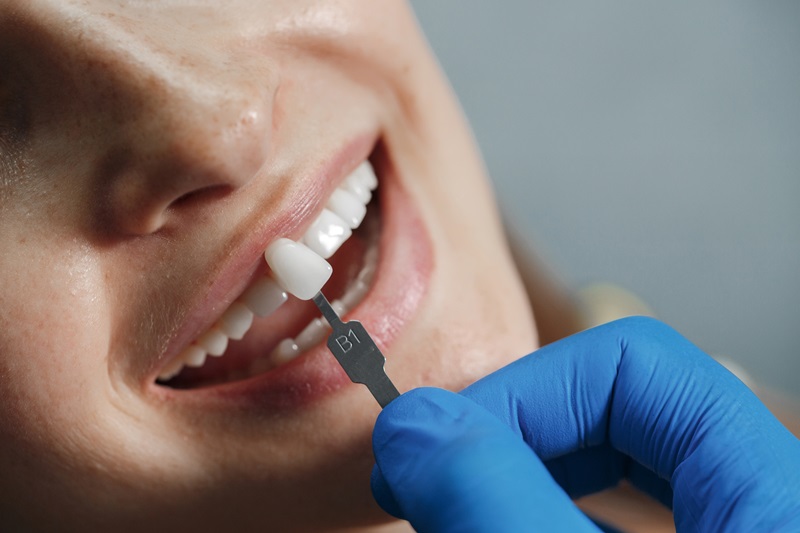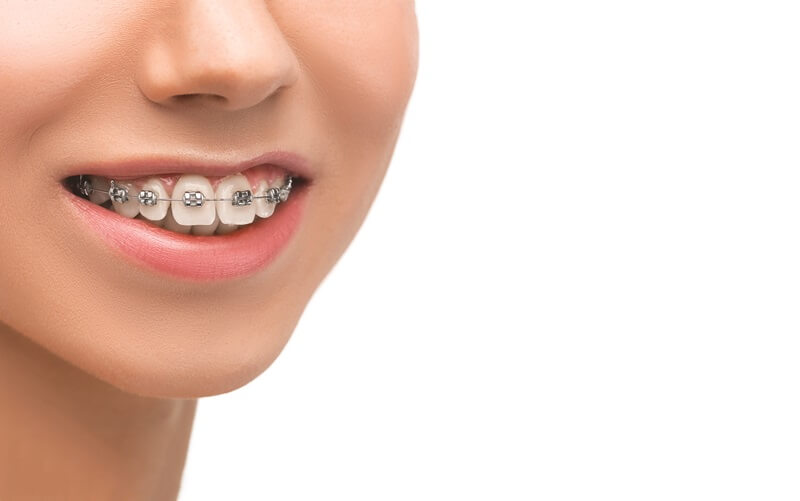
Question 1:
Are veneers harmful to your teeth in the long run? For instance, would it increase the likelihood of their experiencing tenderness or decay?
Answer 1:
A little layer needs to be ground off the tooth surface before the veneers can be bonded. Less scraping will be required from teeth that are structurally sound and do not have significant misalignment. Veneers aren't a big deal in these situations. Having said that, veneers can only be applied on the anterior tooth surface. Put simply, regular dental cleanings are necessary for the posterior surfaces of your teeth. Crowns are an exception to this rule. A crown's superior protection against decay, impacts, and other outside forces is due to the fact that it covers the whole tooth. However, a considerable amount of tooth enamel scraping is required for crowns.
DDS. Dilek Aksu Guler

Question 2:
Is it essential to replace each veneer simultaneously?
Answer 2:
Veneers are susceptible to small cracks that can require replacement at some point. Nevertheless, it is recommended that you change all of them simultaneously if your dentist believes that replacing just one would result in a noticeable change in color tone. This is because the dentist has the ability to detect minute fissures in existing veneers, even if you don't, and assess the possibility that your new veneer may create a change in tone.
DDS. Dilek Aksu Guler

Question 3:
What is the most often utilized veneer hue among young women to attain pearly white smiles? What type of color bonding would be employed to prevent the reflection of tetracycline stains through the veneers?
Answer 3:
The usage of Tetaraclyne antibiotics is the root cause of these stains. As they move towards the middle of the tooth, these stains deepen beneath the enamel. In the majority of cases, it manifests in the most of teeth simultaneously. During surgery, dealing with these spots may provide a significant challenge. The more the dentist scrapes the tooth's surface, the more stained it becomes, and the harder it is to conceal the dark hue. Veneers applied after laser teeth whitening work well for minor stains, but in cases of severe discoloration, the laser might potentially harm the dental nerves. Using a porcelain veneer in a complementary shade would be the ideal choice in such a situation. The two most popular veneer colors are BL2 and BL3. Treatments for discolored teeth sometimes involve the use of opaque veneers that have a low light.
DDS. Dilek Aksu Guler

Question 4:
Why bother with orthodontic treatment if veneers are so accessible? (in the case of cosmetic concerns only; misalignment or malocclusion will not be addressed)
Answer 4:
First, less surface abrasion will occur on the teeth when veneers are placed as a consequence of orthodontic procedures. Secondly, teeth that aren't in the proper alignment can't support veneers, and they're also more susceptible to damage from things like pressure and chips. Lastly, the effectiveness of teeth cleaning is greatly impacted by orthodontic procedures, which in turn impacts the longevity of the treatment. For patients with malocclusion, it is highly recommended to undergo a 4-month orthodontic therapy prior to veneer treatment in order to maximize the effectiveness of the treatment.
Orth. Ugur Agar
Question 5:
My lowest four teeth were dislocated and cracked when I passed out last year; I spent six weeks in a splint and had four root canals because my teeth had become necrotic. The potential for root resorption is particularly worrisome for the long-term health of these teeth.
Answer 5:
In the condition known as root resorption, odontoclastic cells proliferate in the gums and inflict harm to the tooth's root. There are four ways to look at root resorptions caused by influences from the outside world; these are all part of the external resorption category.
- Class 1: Class 1 refers to the initial phase of resorption.
- Class 2: Class 2 resorption has progressed somewhat into dentin but has not reached pulp.
- Class 3: Classes 3 and 4 are near the pulp and exhibit alternating upward and downward motion.
- Class 4: Class 4 is the worst kind; it surrounds the pulp and necessitates the most intrusive surgery.

The success percentage decreases from 100% in classes 1 and 2 to 78% in class 3 and 12% in class 4. Surgical accessibility is another factor that contributes to the resorption of exterior teeth. Removing the odontoclastic cells responsible for resorption is a simple surgical procedure in regions where the procedure is uncomplicated. In regions where surgical intervention is difficult, tooth extraction could be considered necessary. However, if there is no inflammation, it is very important to know how fast the tooth resorption progresses. Regarding this matter, your dentist could refer to your previous x-rays or recommend that you undergo a 6-month or 1-year monitoring procedure. Assuming there is no danger of inflammation, it is preferable to wait rather than remove the tooth when surgical intervention is not an option.
Orth. Ugur Agar
Question 6:
Do veneers fall off easily?
Answer 6:
Although it is not very common for veneers to fall, certain patient groups should not be administered veneer. People who suffer from crooked teeth, teeth grinding, a predisposition to bite on hard things (like pipes), or an insufficient attention to dental care are all examples of patients in this category. If you don't identify with any of these categories, you have the option to have veneers instead of crowns. Compared to crowns, veneers are less intrusive and provide more aesthetically pleasing outcomes. They increase light trans mission and make your teeth seem more natural with their modest profile. However, veneers cannot be put to misaligned teeth until the teeth have been adequately fixed by orthodontic methods like braces.
DDS. Dilek Aksu Guler
